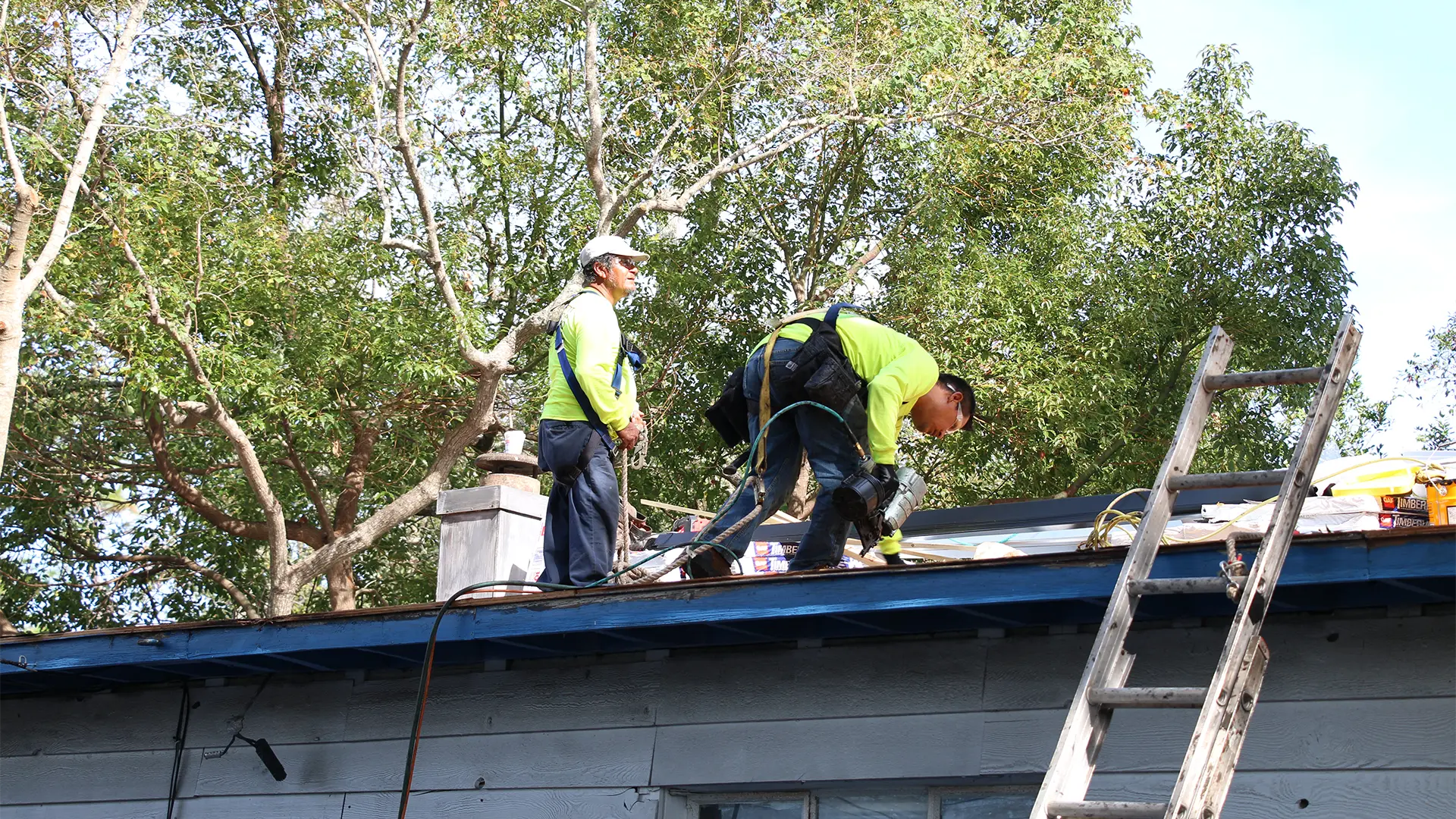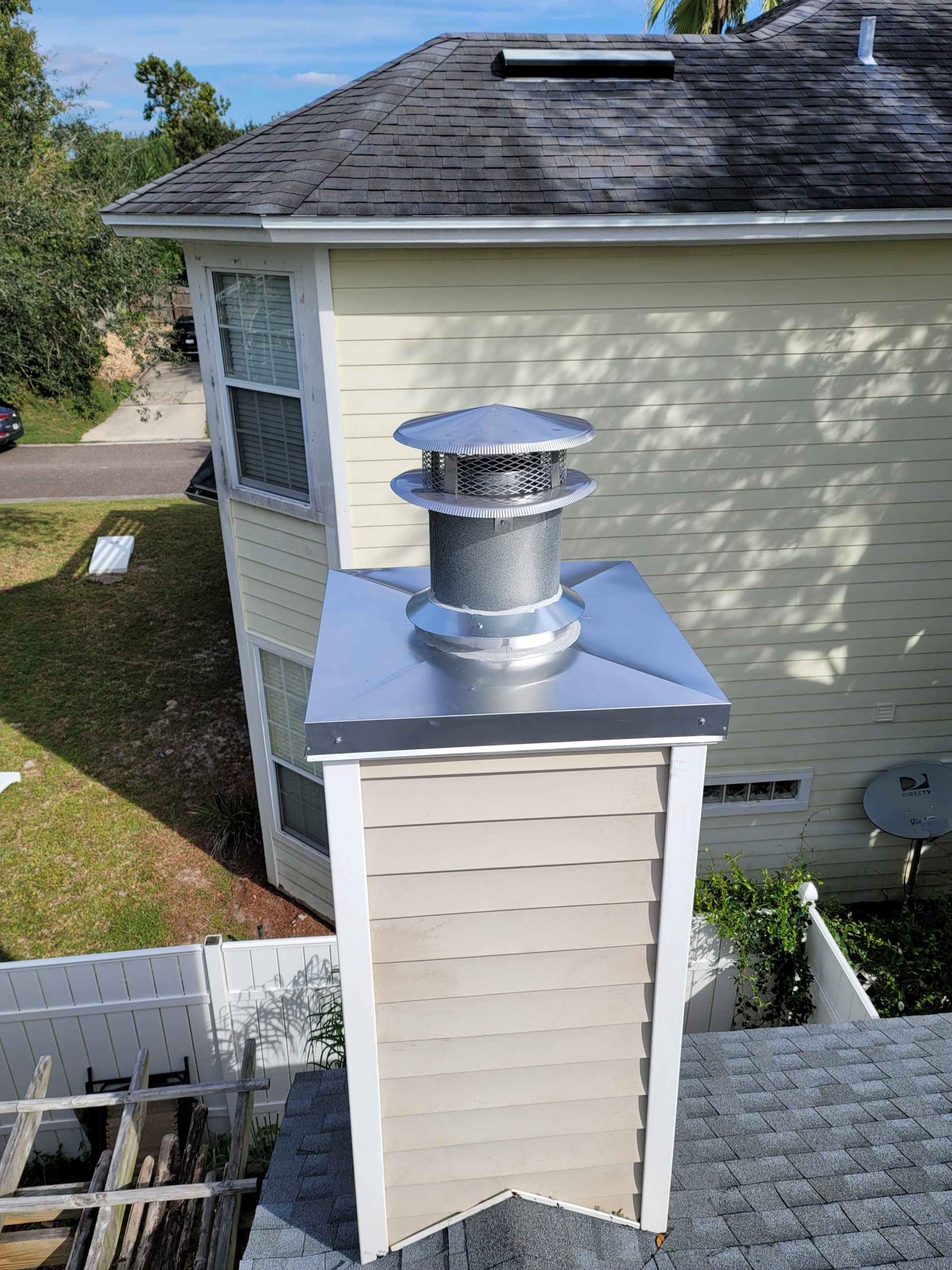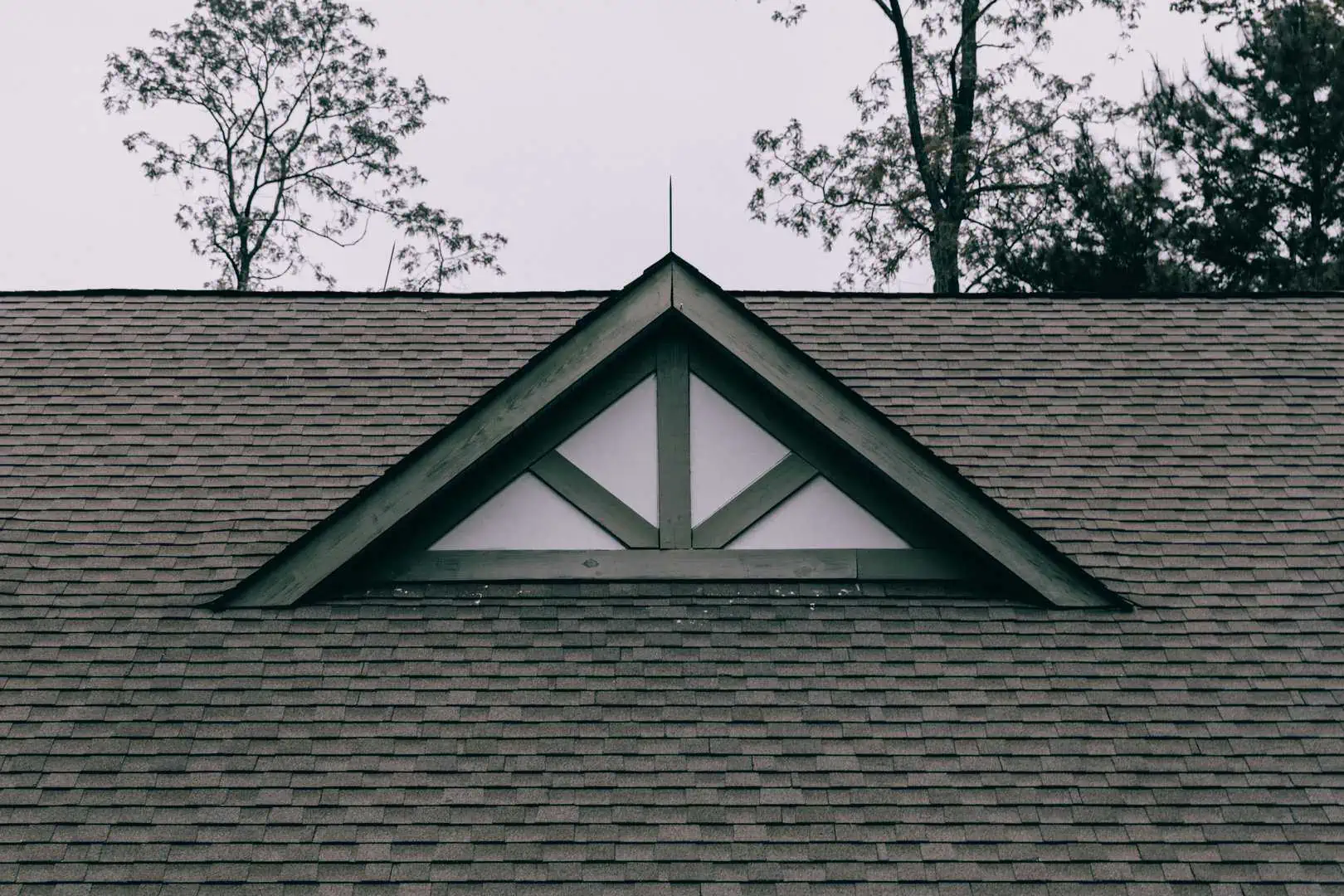Age of the Roof
The age of the roof is one of the largest factors when determining if you should replace your roof. Below is a table with the average lifespans of the most common roof types. If your roof’s age is approaching the end of its lifespan, you’re better off getting a full roof replacement. Keep in mind if you live in Florida the lifespan of your roof will most likely be shorter than the average due to the harsh weather, strong UV rays, and high humidity.
| Type of Roof | Average Roof Lifespan |
| Asphalt Shingle (3-Tab) | 15-20 Years |
| Asphalt Shingle (Architectural) | 20-30 Years |
| Metal Roofing | 40-70 Years |
| Clay/Concrete Tile | 50+ Years |
| Composite Shingles | 40-50 Years |
| Slate Roofs | 75+ Years |
| Wood Shingles/Shakes | 30-40 Years |
| Rubber Roofs | 40-50 Years |
Missing Shingles
After a windstorm, you might notice a couple of missing shingles. If the rest of your roof is in good shape, a roofer can usually replace those shingles without replacing your whole roof. If your roof is older and starts losing shingles in multiple areas, that is a different story. Big patches of missing shingles often mean the rest of the rooftop isn’t in great shape, either. It’s easier to have the whole thing replaced instead of repeatedly calling your roofer for patch after patch.
Curling or Peeling Shingles
Just because shingles are still attached to your roof does not mean they’re doing their job. Shingles become dried out and crusty as they age due to UV exposure and everyday wear. Eventually, they start curling up along the edges. Some might peel partway off the roof surface. If this happens across your roof, it usually means you’re due for a roof replacement. Curling shingles can lead to leaks and reduced ventilation which can lead to costly repairs down the line.
Loose Granules
If you look at a new shingle, you will notice it is covered in textured, pebble-like bits of asphalt. These granules allow shingles to shed water better. They also make the shingles more durable against wind and scraping branches. However, as shingles age and dry out, they start to lose their granules. At first, the roof will shed a few granules at a time. But when the shingles reach a particular stage of disrepair, they shed large amounts of granules all at once. You can tell whether your roof has reached this stage by looking inside your gutters. If you scoop out a handful of shingle granules, your shingles are on their last legs and need to be replaced. Granule-free shingles don’t offer much protection.
Moisture in the Attic
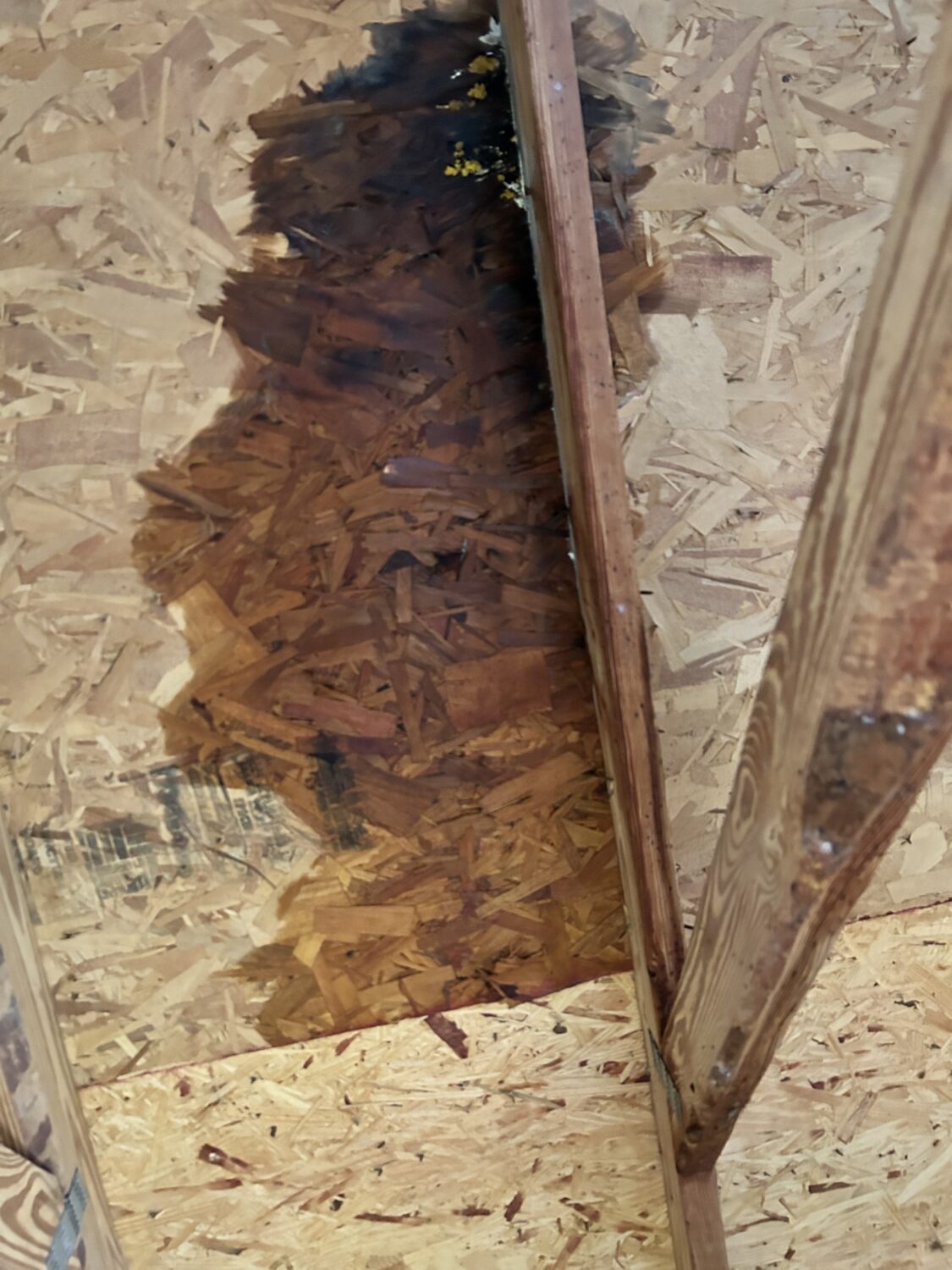
So far, the signs we’ve discussed have all been ones you can observe from outside your home. But you can also venture into your attic to look for signs of roof deterioration. An indicator that your roof is at the end of its lifespan is moisture in the attic. The attic might feel humid, or you may even see droplets of water on the floor or trusses. Don’t assume that a leak is not a big problem because it is small. Ideally, you want to have your roof replaced while leaks are still small so you don’t have to contend with significant water damage.
Moldy Insulation
If it has not rained in a while, you may not see drops of moisture in your attic. However, the state of the insulation will let you know if there have been any leaks recently. Using a gloved hand, pick the insulation up in a few areas and peek at its underside. Do you see any dark or discolored spots that could be mold? Mold only grows in moist areas, so if it is growing on your insulation, that insulation was damp at one point. And that moisture almost certainly indicates your roof needs some work.
Stained Walls and Ceilings
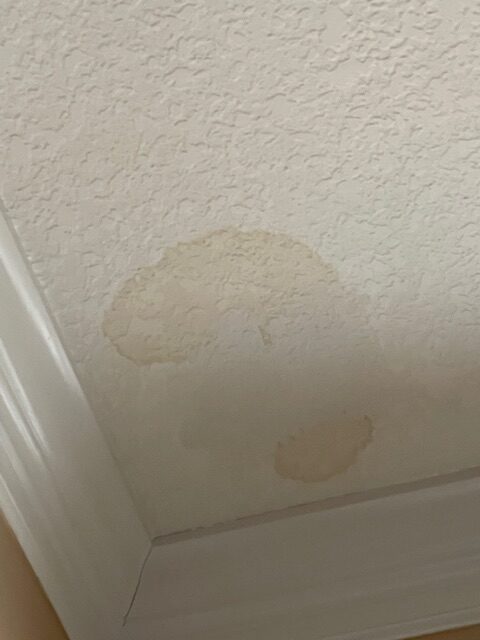
Take a look at the walls and ceilings on the top floor of your home. Do you see any areas where the drywall is discolored? On white ceilings, you may see unevenly shaped, ovular patches that are tan or brown in color. These are areas where the drywall became wet at some point. If the spots are on the ceiling or near the top of the walls, the most likely cause is a roof leak.
Increased Energy Bills
An aging roof will not insulate effectively, leading to higher energy costs to heat or cool your home. If you notice your energy bill has been steadily increasing over time, it may be time to schedule a roof inspection.
Sagging
When you’re outside, look up at the roof and try to assess whether the roof is flat and straight. Do you see any evidence of sagging when you look across any of its faces? If your roof does appear to be sagging, that is a major concern. It means the roof deck under the shingles has been compromised and is bowing. The only way to fix the roof deck is generally to replace the whole roof.
If you notice any of the signs above, your roof probably needs to be replaced. However, the only way to know for sure is to contact a professional roofing contractor and have them do a thorough inspection. If you’re looking for a roofer in Northeast Florida, contact Reliant Roofing for a free roof inspection. Our experienced roofers will be happy to advise you.
